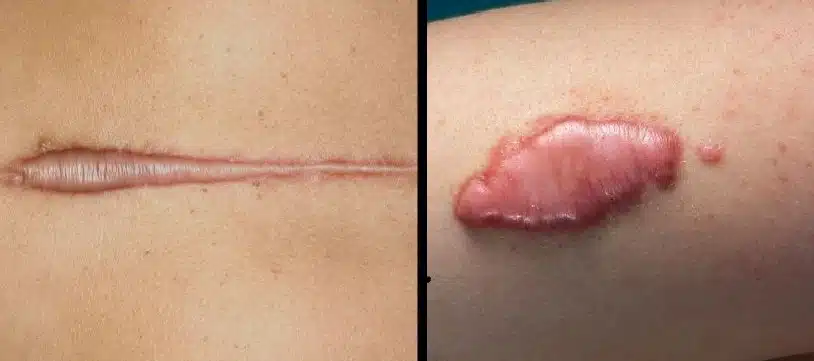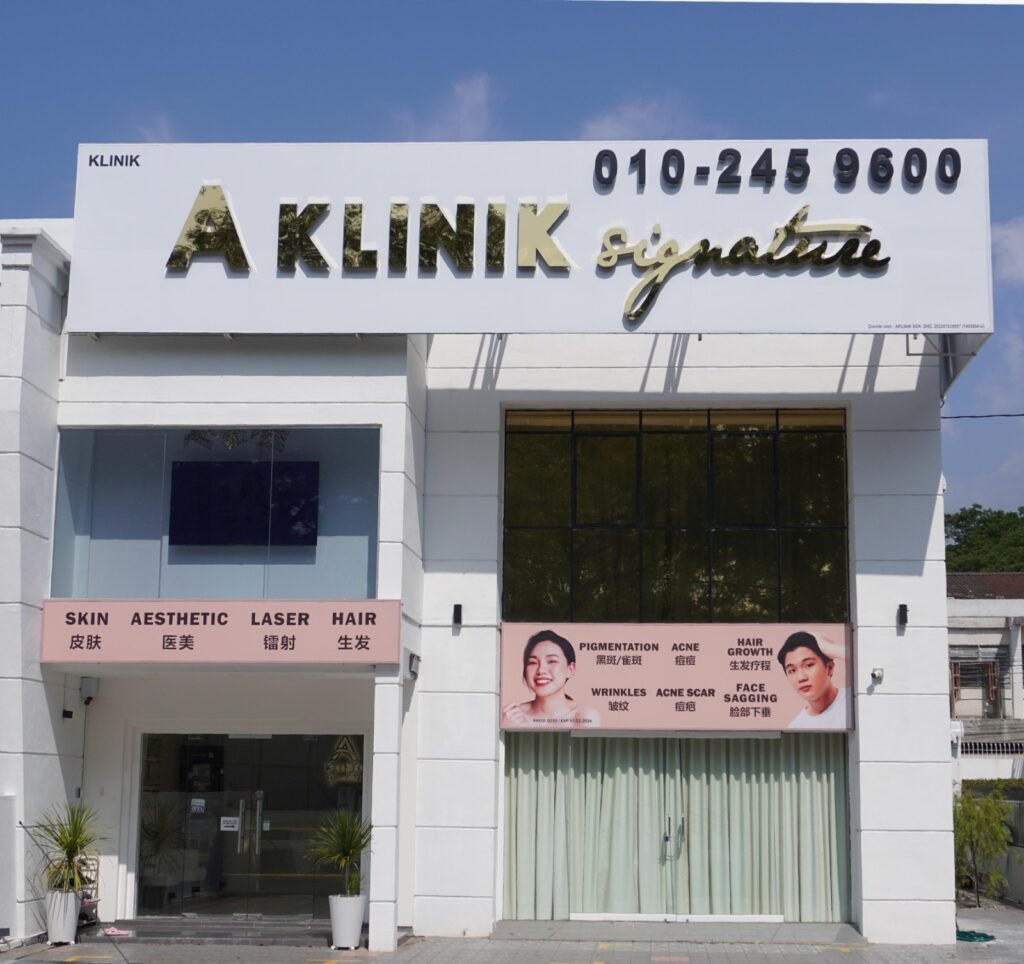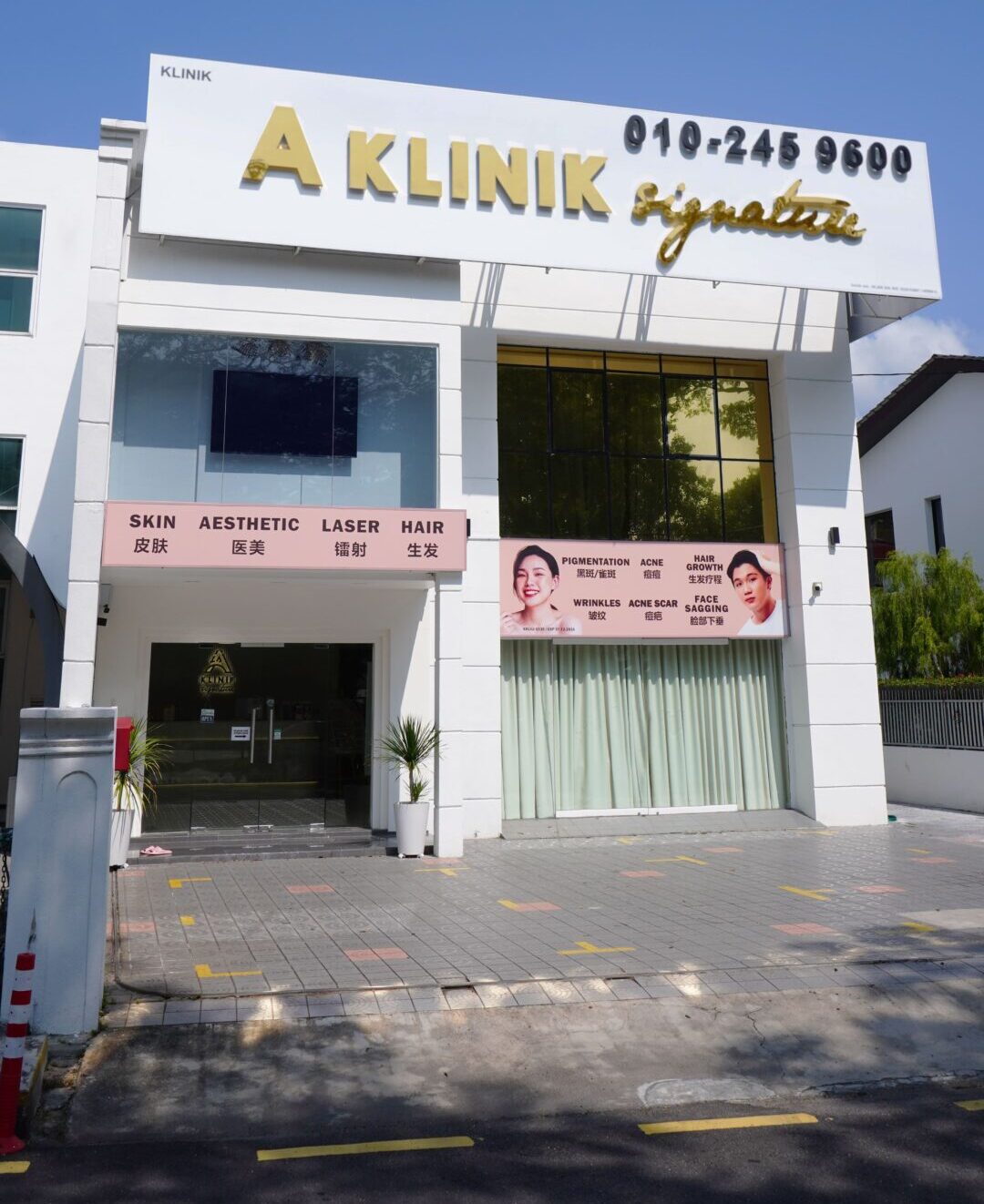
Scars are a natural part of the healing process, but not all scars are created equal. Two types that often cause concern are hypertrophic scars and keloids. While they may appear similar, they have distinct characteristics and require different approaches to treatment.
What Sets Hypertrophic Scars and Keloids Apart?
Both hypertrophic scars and keloids result from an overproduction of collagen during the healing process. However, their behaviors differ:
Hypertrophic Scars: These remain within the boundaries of the original wound. They often appear red or pink and may gradually flatten and fade over time.
Keloids: These extend beyond the original wound area, forming raised, firm, and often darker patches. Keloids can continue to grow over time and may become itchy or painful.
Causes and Risk Factors
Several factors can influence the development of hypertrophic scars and keloids:
Genetic Predisposition: Individuals with a family history of keloids are more likely to develop them.
Skin Type: Darker skin tones have a higher propensity for keloid formation.
Age: Younger individuals, particularly those between 10 and 30 years old, are more susceptible.
Injury Location: Areas with high skin tension, such as the chest, shoulders, and earlobes, are common sites for these scars.
Type of Injury: Surgical incisions, burns, piercings, and acne can all lead to hypertrophic or keloid scarring.
Diagnosing the Scar Type
At first glance, hypertrophic scars and keloids can look quite similar—both are raised, firm, and may be pink or darker than your natural skin tone. But to determine the right treatment, it’s important to get the diagnosis right.
A trained dermatologist or healthcare provider will usually start with a thorough visual examination. They’ll ask questions like:
- When did the scar form?
- Has it grown beyond the boundary of the original wound?
- Is it itchy, tender, or painful?
- Do you have a history of abnormal scarring?
These answers provide useful clues. Hypertrophic scars tend to stay within the original wound area and may appear a few weeks after the injury. Keloids, on the other hand, often take months to develop and can grow well beyond the initial injury site.
If the diagnosis isn’t clear-cut, especially in early-stage or atypical cases, a skin biopsy may be recommended. This involves removing a small sample of the scar tissue under local anesthesia for microscopic analysis. The goal is to confirm the type of scar and rule out other conditions such as:
- Dermatofibromas
- Nodular fasciitis
- Benign skin tumors
- Rarely, skin cancers
For people with recurring keloids or unclear medical history, genetic predisposition is also considered. Some individuals may even be referred for allergy testing if contact dermatitis is suspected to be contributing to the inflammation around the scar.
Getting the diagnosis right from the start matters—not just for treatment, but also for setting realistic expectations. Hypertrophic scars often fade with time and mild treatment, while keloids may require more aggressive, ongoing management to prevent recurrence.
Treatment Options for Hypertrophic Scars

Hypertrophic scars are generally much easier to treat than keloids, and many people see improvement over time—even without intervention. That said, if the scar is bothering you, whether due to appearance, tightness, or itching, there are several effective treatment options available. The right approach depends on the size, location, age of the scar, and your skin type.
Corticosteroid Injections
If your hypertrophic scar is raised, red, or itchy, steroid injections may be the go-to option. These injections, usually spaced out every 4–6 weeks, help reduce inflammation, slow collagen production, and gradually flatten the scar.
They can be used on older scars too, and are often combined with other treatments like silicone or laser therapy for better results. Most people start noticing improvement after just 2–3 sessions.
Laser Therapy
Laser treatment has come a long way, and it’s not just about reducing wrinkles or age spots anymore. They can now improve hypertrophic scar appearance by up to 60–70% over a few months.
For hypertrophic scars, pulsed dye lasers (PDL) are commonly used to reduce redness and improve skin texture. They work by targeting blood vessels in the scar tissue, helping the scar fade and become more pliable.
Other lasers like fractional CO2 lasers can also help remodel collagen and improve scar elasticity, especially for older or more stubborn scars. Treatments are usually spaced about 4–6 weeks apart, and you may need multiple sessions for full results.
Microneedling
If you’re looking for a minimally invasive option that also boosts your skin’s overall health, microneedling might be a good fit. This technique uses tiny needles to create controlled micro-injuries in the scar, triggering the body’s natural healing response and stimulating new collagen production.
Microneedling can help smooth out the texture of raised scars and fade pigmentation over time. It’s especially effective when combined with serums or platelet-rich plasma (PRP) therapy.
Many patients need a series of 3–6 treatments spaced a month apart for optimal results.
Treatment Options for Keloids

Keloids don’t play by the same rules as hypertrophic scars. These scars can be persistent, grow beyond the borders of the original wound, and have a frustrating tendency to come back—even after treatment. That’s why managing keloids isn’t always straightforward. It usually takes a combination of therapies, some patience, and a tailored plan made with your doctor or dermatologist.
Corticosteroid Injections
These injections are one of the most common and effective treatments for keloids. They work by reducing inflammation and slowing down the excessive collagen production that fuels keloid growth.
Typically, injections are given every 3 to 4 weeks, and you might start seeing improvement after the second or third dose. Over time, the keloid may flatten, shrink, and become less itchy or painful.
50–100% flattening was reported in most patients after a series of steroid injections. However, recurrence still occurred in some, especially without follow-up care.
Cryotherapy
For smaller keloids, especially on the earlobes or upper chest, cryotherapy—the use of extreme cold—can be surprisingly effective. It works by damaging the keloid tissue from the inside out, leading to its gradual shrinkage.
Cryotherapy is often combined with steroid injections to enhance results and reduce recurrence. You may need several sessions, but the procedure is usually quick and done in-office.
Keep in mind: It may cause temporary skin lightening, especially in darker skin tones, so discuss this with your doctor beforehand.
Laser Therapy
The most commonly used is the pulsed dye laser (PDL), which targets blood vessels in the keloid to reduce redness, flatten the scar, and soften its texture.
Lasers may not remove a keloid completely, but they can make it look and feel significantly better. And when used with other treatments, especially steroids, laser therapy becomes even more effective.
Surgical Removal
Cutting out a keloid might seem like the most obvious solution—but it comes with a catch: up to 45–100% of keloids can come back after surgery unless something is done to prevent regrowth. That’s why surgery is almost never done alone.
If you’re considering surgery, make sure your treatment plan includes a solid strategy for preventing recurrence.
When to Consult a Professional
If you notice a scar that is growing, painful, or causing distress, it’s advisable to consult a doctor. Early assessment and treatment can improve outcomes and prevent complications.
Aesthetic Clinic in Penang
Treat Hypertrophic Scars and Keloids at A Klinik Signature

Understanding the differences between hypertrophic scars and keloids is crucial for effective treatment and management. With appropriate care and professional guidance, many individuals can achieve significant improvement in scar appearance and comfort.
A Klinik has effective treatments to remove both of these scars. Visit one of our clinics in KL or Penang and speak to an aesthetic doctor who can recommend the best option for you.






